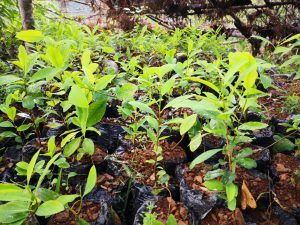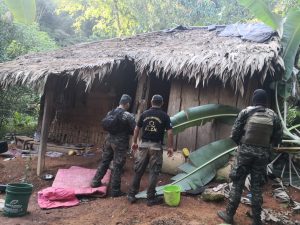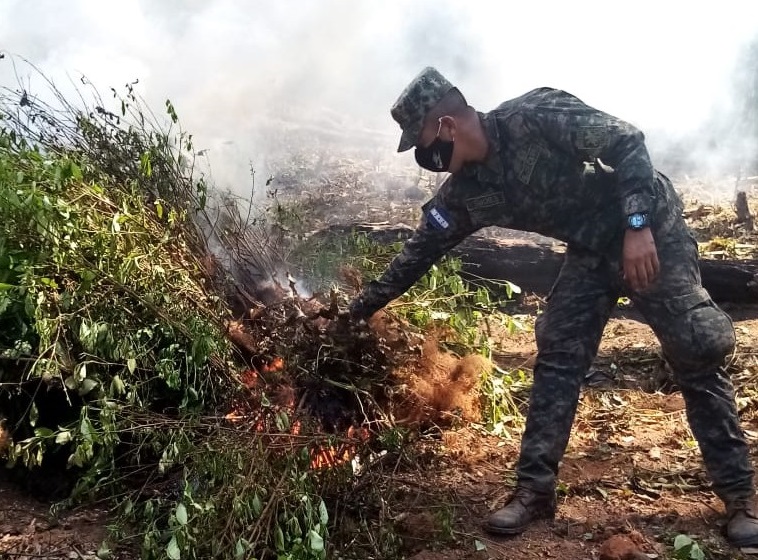Inhospitable tropical forests with no vehicular access and close to the Atlantic Ocean are the preferred areas for criminal groups to grow coca crops in Honduras. This is what Army First Lieutenant José Antonio Coello, Honduran Armed Forces Communications officer, explained in an interview with Diálogo.
Since the first coca plantation was found in the Lempira department in 2017 (with 10,000 bushes), Honduran security forces have increased their operations to locate and secure coca crops and narcolabs, which, according to 1st Lt. Coello, are located in areas surrounding the crops.

In 2020, Honduran authorities destroyed 424,900 coca bushes, while only 40,000 bushes were reported in 2019, 1st. Lt. Coello said. In addition, 12 drug labs were found in 2020, or eight more than in 2019, he added.
“What these groups are looking for is to evaluate if the national territory is a feasible area to produce cocaine hydrochloride and, for the bushes, it has to do with topography, altitude, weather, soil levels,” 1st. Lt. Coello said.
The officer said that they have been able to trace the cocaine produced in Honduras, explaining that part of it was distributed within the national territory, while some may have gone to other countries.
“That is why we maintain permanent operations with countries in the region,” 1st. Lt. Coello said. He highlighted that in 2020, Honduran authorities have seized eight light aircraft, more than 47 vessels, and more than 370 vehicles carrying drugs — achievements that were made despite the pandemic and the destruction caused by hurricanes Eta and Iota.
The coca plants grown in Honduras may be of lower quality than those grown in South America, Raúl Pineda Alvarado, professor in Criminal Policy at the National Autonomous University of Honduras, who holds a doctorate in Penal Sciences, told Diálogo.

“[The bushes] do not reach 80 centimeters [in height], they do not reach the 2 meters that [plantations] in Colombia have,” Pineda said.
According to the professor, the experiments with coca plantations in Central America are due to the decline of the Cali and Medellín Colombian cartels. He added that narcotraffickers have found areas in Central American countries to grow and produce drugs, so as to facilitate or reduce the prices of trafficking.
In June 2013, the first coca plantation was found in Central America in the Panamanian region of Darien, on the border with Colombia, the Spanish newspaper El País reported at the time. After the Honduran government confirmed the destruction of coca bushes in its territory in 2017, Guatemala and Costa Rica announced their first findings of coca plants in 2018, Reuters and the Costa Rican newspaper El Observador reported then.
According to Pineda, Mexicans linked to the Sinaloa Cartel started coca crops in Honduran territory. “It’s likely that it [the Sinaloa Cartel] has continued with that activity,” he added.
In October 2020, the Honduran newspaper El Heraldo reported that according to Honduran intelligence, members of the Sinaloa and Jalisco cartels may be behind the coca crops and drug labs found that year. “They send large amounts of dollars from Mexico to plant coca crops and for narcolabs facilities for production,” an intelligence source told the newspaper.
In addition to attacking cocaine production head on, 1st Lt. Coello said that narcotrafficking also damages the environment and wildlife, and therefore requires additional actions. “When a clandestine area or plantation is designed, trees are cut down; that is why we fight against related crimes: deforestation, illegal logging, illegal hunting of endangered animals,” he said.
“The Armed Forces, within the framework of FUSINA [the National Interinstitutional Security Force], have come together with friendly and partner countries in the fight against these regional threats to eradicate or considerably reduce the entry of drugs into Honduras,” he concluded.









